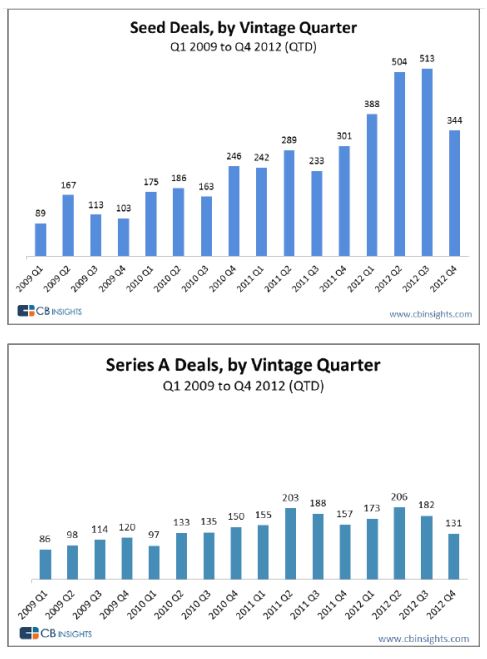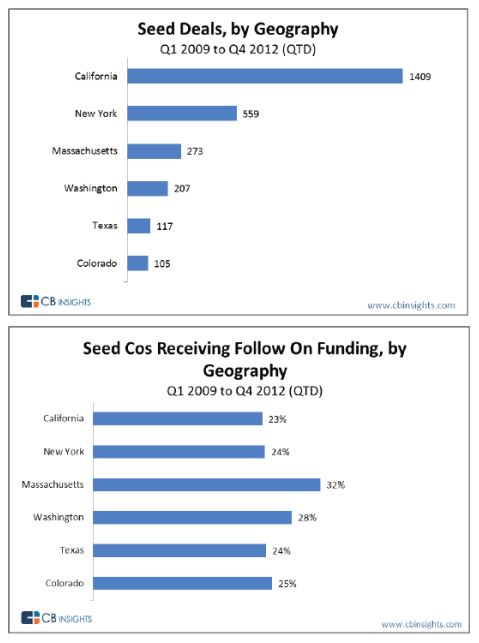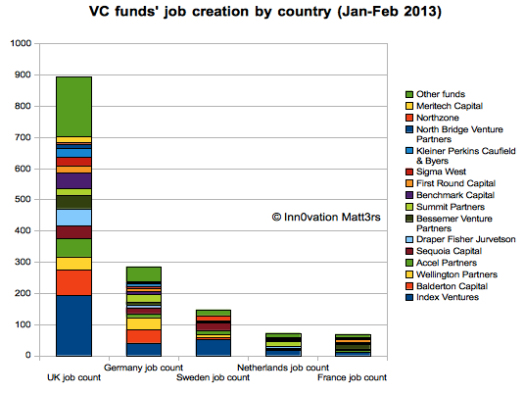This is a blog post about Rummble, a tech start-up which the author founded. Written further to an article published in The Kernel 0 subsequent to an employment tribunal for unfair dismissal 1. The author instigated the tribunal claim against Rummble, his own company, after being removed involuntarily as CEO in December 2010.
Discussing problematic times in a business publicly is a balance between remaining professional while ensuring the information which is in the public domain is accurate and / or has the appropriate background for people to draw sensible conclusions. Some may consider me publishing any thing at all inappropriate, an opinion which I understand but I also feel the events 2 years ago were unusual circumstances and the decision to write this -very long- blog post was not taken lightly. I have until now, stayed publicly silent on the topic.
Often people choose a cautious route, making no comment or issuing an appropriately inert corporate response. Since leaving Rummble, the author has remained quiet publicly on the topic. But with more information in the public domain regarding events, the author finds himself more in agreement with the Duke of Wellington.
The Kernel article outlines the life of Rummble after it’s marriage to M8 Capital until the authors departure. This blog post provides some background and mitigating circumstances (on behalf of all involved) to the events mentioned in The Kernel’s article, while also responding to Steve Karmeinsky’s (aka Steve Kennedy’s) comments made on that article, which the author feels lack context 2 [Since posting this blog Steve has removed the comments].
Everything is better with two m’s
For the uninitiated, from late 2006 to late 2010, I created and ran a product and service called “Rummble” which enabled you walk out of the door and within 30 seconds show you recommended places nearby that you’ll love, via your mobile.
The technology arguably delivered better, more accurate and more personalised recommendations for places than most other services, using very little base data. It also solved the cold-start problem which many of these services suffer from.
In geeky terms, it was a mobile location based personalised recommendation engine, deployed across web, iPhone, Android, WAP, mobile web, Windows Phone and even (gulp) Vodafone 360.
Clarifications
Before this blog was written and posted, I offered the team at Rummble Labs to issue a joint press statement after the publishing of The Kernels article, an offer which was ignored. I felt therefore this was my only right to reply. It’s certainly not an attempt to dodge blame for the financial difficulties Rummble got in to in 2009 (and perhaps instead of determinedly pushing on I should have just given up and shut up shop rather than roll the dice further) but it hopefully does provide insight into what can happen when things break down. Had I read this post back then I might have made different decisions, hopefully it inform others.
Two addendum’s to the content of the Kernel’s article.
Firstly Clive Cox was my long-time employed CTO not my Co-Founder (I believe this has been corrected in the article after I responded on Twitter).
For better or worse I founded Rummble on my own and as most lone Founders, took the ultimate burden of responsibility. As some commentators rightly point out, I was thus culpable for the destiny of Rummble, including ceding control of the business. Brownie points perhaps, for stating the obvious 😉
Secondly, while it’s true Alex Housley and I had some tough times during a challenging period for the company, on the whole we got on well. He recognised the potential of what Rummble could be. After all this is why at the end of 2009 he sold his company, Total Hotspots, to me and why I chose to buy it.
It is though also true (as reported in The Kernel) that latterly I was frustrated with his performance. Nonetheless, it is a difficult job to create success with limited resources. Were it easy, most start-ups would not fail and more people would want to work in this challenging environment. Thus, I kept him employed during this trying period for three reasons:
- I felt we could still find a role that worked for he, Rummble and I.
- He did add a level of value to the business and was a trusted, reliable colleague. Hiring new people is disruptive, never easy, often expensive and finding truly entrepreneurial committed people to employ in London is pretty difficult. Alex ticked those boxes.
- I felt a greater responsibility toward him than the average employee because firing him would have been not entirely dissimilar to the experience I had a few weeks later (i.e. being removed from my own company, Rummble, involuntarily. A vexing experience). I had bought his start-up and his being fired from Rummble would have meant him being separated from his own start-up, which had been incorporated into Rummble less than twelve months earlier.
Humans Are Selfish
The disappointment to me is not that Alex remains with Rummble Labs or indeed had aspirations to do so, but the way in which he ensured his position there.
Dacher Keltner of the University of California wrote in this paper that “In my seminars I ask my undergraduates to complete the following clause: ‘Human nature is…’ with as many ideas as they can. Typically about 70% of their responses refer to some form of selfishness, competition, or aggression.”
He goes on to write:
Learning theory made famous by BF Skinner starts from the assumption that the organism moves towards self-serving rewards and away from punishments. Within evolutionary psychology all human traits ultimately benefit selfish genes. In economics, it is axiomatic that humans are rational pursuers of self-interest.
I generally subscribe to this, which is why we have wars, the boom and bust of the stock market and bank bailouts. This said, humans are also capable of love, generosity and great demonstrations of compassion (the paper goes on to discuss this).
I consider myself to be pretty cynical and generally view people with – if not suspicion – then a healthy scepticism. It was with surprise then when my mother told me a few months ago that “You were incredibly trusting as a young child, far too much so. I used to worry about it.”
This perhaps explains why I subscribe to an admittedly somewhat woolly concept of certain reasonable conduct between start-up Founding entrepreneurs, when doing business together.
While Alex was not my Co-Founder at Rummble, as a Founder of his own start-up I expected honesty and loyalty from him, things which I felt were grossly lacking when Alex opportunistically slid in to my role leading the renamed “Rummble Labs”.
Alex registered “Rummble Labs” as a domain name even before my consultation period (during my dismissal as CEO) had completed. He did not mention the fact to me and what he did say told a different story to that which was, with hindsight, actually going on. While M8 Capital probably told him, quite accurately, that the writing was on the wall for me, breaking rank in this manner very much enabled their strategy.
A bit of alternate manoeuvring might have meant a more constructive conclusion to events for everyone (as I discuss in a few moments).
In short I trusted him as a right hand man to have deeper knowledge of the business in order to accelerate our progress, but as most people do, he ultimately prioritised his own career ahead of other considerations.
Disloyal?
As an employer, one should never be surprised by someone prioritising their own progress. As you grow your start-up, devolving deeper responsibility becomes a necessity. I observe that some Founders in smaller start-ups find this transition difficult, especially if they have been bootstrapping for some time. But it is a leap one has to make emotionally or one’s company doesn’t grow.
You need instead to protect your Founder position in other ways, rather than attempting to remain safe by controlling knowledge or responsibility.
In a word, a good CEO should almost be trying to hire himself out of a job.
Other members of the team from 2010 also stayed on at Rummble Labs but I naturally bear no ill-will towards them. They were also employees. This was their career and their job, their security; not their responsibility.
The lesson here then is are you expecting someone to behave like a friend, or an employee of your business? Early stage start-ups with very small teams can get this confused.
Namby Pamby
While to many from the cut-throat school of business thinking, my talk of loyalty and respect might sound naïve, I’d actually argue in Rummbles case, that everyone (Alex, Rummble Labs, M8 Capital and myself) would have benefited from a more candid (albeit challenging) conversation about their genuine plans for Rummble and their own intensions, selfish or otherwise.
This is after all, business. One should strive to be practical and particularly as M8 Capital had majority control, they risked little by doing this. In fact they – and Rummble Labs – only had to gain.
Investment
Steve Kennedy makes some comments below The Kernel’s post which are roughly accurate, but do not address why Rummble was in such financial difficulties to start with, at the end of 2009.
As CEO I must of course ultimately carry the can, but life is rarely that straightforward and to suggest it was only my decisions which precipitated problems, I think is both a simplification and somewhat disingenuous.
Steve neglects, for example, to mention that a small investment vehicle Highgate Associates had been due to invest £300,000 ($470k) for a 10% shareholding as early as October 2009 (the M8 Capital investment closed, after lengthy DD and contractual wrangling, in April 2010).
Highgate Associates, then a group of three angel investors (to my knowledge with limited experience angel investing in technology start-ups) spent a few days on-site in the Rummble office performing due diligence with intention to invest.
They were given access to all accounts including our list of creditors, which for a small start-up with no significant revenue I concede totalled a significant figure. But not one which was unrecoverable per-se, if investment was found. Many tech start-ups of course fail abruptly without having reached profit or break-even, by failing to reach the next investment milestone.
To cut a long story short, HMRC (the UK tax authority) had as Steve suggests, been threating legal action because we had a backlog of dues. This was communicated to Highgate Associates. However, we had also received agreement from HMRC for a rest bite in order to close angel funding (quite unusual for HMRC as it happens) and this was to be executed at the winding up hearing some weeks later.
False Start
With Highgate Associates in full knowledge of the company’s financial position, contract signing vacillated until a few days before Christmas, at which point I received an email from Highgate asking for more than the original equity agreed. They sighted the reason as being the risk of investing £300,000 ($470k) in a company with over £100,000 ($150k) of liabilities.
I responded to this at length explaining why I felt this was an unreasonable, in summary because:
- they had been in full knowledge of the facts since DD weeks previously (something which Highgate Associates dispute)
- and we had had confirmed that RBS would provide a SFLG scheme loan of £250,000 ($390k) if we closed the said funding, negating the risk
Despite my frustration, myself and Rummble’s board proposed a compromise stating that Highgate could have the increased equity if the loan was not closed, but they would not receive this if the loan came to fruition.
This was a logical resolution to our mind, based upon Highgate’s stated position that it was the reduced cash flow runway, due to Rummbles debts, which worried them. In actual fact for this position I had some sympathy, if not the manner of communication.
An email came back stating that if I did not accept the contract as they proposed almost immediately, Highgate would attempt to have the company wound up (i.e. to apply to the courts to have a company liquidated because it owes money it cannot pay).
This revealed Highgate Associates as using first a tactic (our weak financial position) in my personal opinion to improve the deal, then a threat (of winding up) to force us to accept the deal.
Their claim was (and probably still is) that we had not been clear with the situation surrounding HMRC. I dispute this, as does Rummble’s Chairman from that period John Paterson. An experienced businessman whose reaction to their conduct I won’t repeat verbatim here because it’s before the 9pm watershed. Consequently, neither of us found favour with Highgate’s approach.
Someone else who was close to the deal at the time described the negotiating investor from Highgate as having, in his personal opinion “an anger management issue” and that they felt the deal had failed because in their opinion Highgate’s negotiator was “… unable to respond to a logical argument calmly, subsequently distorting facts and issuing commercial threats”.
Six of one, half dozen of the other
As with most things there are two sides to every story.
In my view, generally in life one’s opinion of peoples actions are based upon:
- one’s own previous experiences (e.g. as investor or entrepreneur)
- one’s own bias (friendship, association or vested interest)
- and one’s cultural empathy (religious, moral point of view or belief system)
..which coalesce to create an expectation which is then fulfilled or not.
An opinion of right or wrong is consequently formed.
Whoever was right and wrong – and I of course have my own opinions – any investment made under such circumstances in an early stage business is setting itself up to fail, if both parties are at each other’s throats before it closes.
Egos are big and the pressures are high. Accordingly, negotiations for VC investment can be tough (read: they usually are). The VC have their Limited Partner(s) and sometimes their own, money at stake and for many deals (except perhaps the top 1% where VCs are clamouring to get in the investment round) sometimes one might be mistaken for thinking their almost doing the entrepreneur a favour. The more likely truth is they see risk all around.
Entrepreneurs only see their vision which the obstinate VC is failing to fulling grasp and can’t for the life of them understand why they don’t just right them a cheque because clearly the next big thing is “e-Hummblr” the LBS IM VOIP AR chat client….
When a deal is done the entrepreneur can feel they are being asked to chop off the arms (and possibly legs) of their child and then assign custody of it to a monster.
I jest but you get my point. Founders and VCs start aligned but negotiations if not VERY carefully managed on both sides can cause a lot of damage. Aggressively threatening the other party is never going to work out well for anyone (as we’ll read later).
I’m not saying don’t be tough in negotiation. Actually I’m a subscriber to the idea that you not only have a right to be tough in negotiation but a duty to be so, for your shareholders, perhaps also your seed or angel investors (to get a good valuation) and your customers.
What is key is having built a stable and trustworthy enough relationship (dare I say even, friendship) with these people beforehand, so as to treat the other person with respect. Later stage and growth deals are different, but a first institutional round is more akin to a marriage than a business deal, that is why some early stage VCs fresh from a career in Private Equity or the corporate world don’t easily flourish when switching to the emotive world of bootstrapping tech start-ups.
But none of this is an excuse to leave your moral compass at the door when you leave your home and your loving family, to go to the office.
Many seem not to adhere to this thinking, or perhaps never had a working compass to start with. As a human being I am certainly entirely imperfect, but I hope I make at least an equitable attempt at playing fair in life including while doing business.
You’ve now at the official half way point of this ridiculously long post. Yey.
What happened next?
With my company out of money and a spirited investor trying to sue Rummble, including us personally as Directors for costs (a silly idea given in my view given it was an investment negotiation which went awry) I still had to go out and raise not insignificant money from a large angel or a VC.
With a shit storm circling this was not an insignificant challenge. Raising Venture Capital investment for consumer facing products which are pre-revenue is painful enough (read: almost impossible) in Europe anyway, let alone with your start-up smelling like a cow shed.
Steve also mentions that at this point I had to secure emergency loans from two shareholders to keep the lights on. This is also true.
Anyone who has run a start-up or two (I’m on my sixth now) will probably have been there or somewhere similar, at some point (i.e. if not asking shareholders for cash then begging at the bank, or negotiating with the wife to re-mortgage the house). Even Richard Branson had to do this, for Virgin Atlantic, a few years after it started.
If you’re highly successful without ever reaching panic point financially, more power to you.
In fact I still have personal guarantees for these loans despite leaving the company operationally, because Rummble’s executive team after I left have at the time of writing, been unwilling to release me from that liability. I actually never invisaged ever being removed entirely from the company, so it didn’t seem a particularly grave issue at the time. Entrepreneurs do have a terrible tendency to be unreasonably optimistic; but then perhaps it’s a requirement in order to stay sane.
The reason for mentioning this? Never, ever take on personal guarantees on behalf of your start-up (something I have advised many times against doing, but then chose on this occasion to ignore my own advice).
A Few Good Men
So, next up I had to go and appear at the HMRC winding up hearing, regards our owed PAYE (company employee taxes).
The lawyer for HMRC stood up as the only creditor in the room (all our others creditors/suppliers were being fully supportive) and said he believed that Rummble should be given time to pay and the winding up petition thus removed. This was granted by the judge, but seconds later Mr Andrew Muir from Highate Associates (who was at the back of the room) piped up that the company also owed him money. This was not true, at least not for him to have the right to petition for Rummbles winding up.
Mr Muir from Highgate Associates had offered to provide the company £20,000 ($30k) of the £300,000 ($470k) in advance of closing the then pending investment, in order to help cash flow (this was before he demanded the extra equity). But the terms of the loan were that it was due to be repaid only on an equity investment event of more than £20,000 ($30k). This event had not yet happened, so the loan was not due, so he was not a valid creditor for the purposes of a winding up petition.
Rummble’s Barrister to my horror, did nothing. This was a grave error. As a direct consequence the Judge allocated lead petition to Mr Muir, because the Judge was not instructed otherwise.
I was now quite frustrated. Thankfully at the very least the Judge still gave us some weeks before the petition was to be served.
Sadly it then took further precious time for our lawyers (not the lawyers of my current start-up I hasten to clarify) to come up with the solution, which was to issue a Strike Out of the winding up petition on the grounds that it was not valid. Had this occurred (which I was all in favour of serving to deal with someone who I now viewed as a bully) the petitioner would have been liable for all costs.
Unsurprisingly perhaps, at this threat Mr Muir backed down, opting to – wisely for him – take his chances of negotiating a settlement from a future investor thus getting all his money back and possibly more, while avoiding the risk of costs. Ultimately, this is what indeed happened with him receiving an extra £6,000 ($9k) to go away quietly, much to my consternation, when we closed Series A.
M8 Capital comes to the rescue
Via an introduction from Joe Neale, I met with the M8 Capital team a few times in Q1 2010; indeed I had done once before Christmas if my memory serves me correctly.
They seemed enthusiastic for Rummble’s vision and I was particularly impressed with Joe Kim, who was articulate and clearly experienced in business.
I will give some credit to Joe Kim at that time for having conviction enough to consider investing in Rummble and consequently engaging in negotiations, despite the swirling problems, in order to get us off the proverbial sand bank which as a crew we had navigated our ship on to (albeit with the additional misdirection of some metaphorical pirates).
I think as a brand new early-stage VC firm (Rummble turned out to be their first investment) which had limited experience dealing with scrappy, dirty start-ups, the Principles (at that time having had virtually no hands-on experience either investing in or running such companies) struggled to understand some of the decisions that had been made, in reality simply to keep the start-up afloat. The banking crash in 2008 caused nearly all angel investment in the UK to disappear for a period of time and this had taken it’s toll on Rummble’s attempts to maintain momentum. So the bootstrapping corner-cutting-to-survive nature of Rummble at that stage I feel came as a bit of shock to them (although I’d argue that on balance, we still had many more processes, checks and balances in place than a lot of similarly sized and funded start-ups!)
As an aside, this lack of hands-on experience at some VC’s within start-ups can cause problems for the VC/Founder relationship as I discuss at length here, and it seems to be a particularly acute problem in Europe.
But the important part of this story is that after explaining my experience with the previous potential investors and then M8 Capital doing their due diligence, they agreed in principle to invest £750,000 ($1.1m) for ~22% of the company.
This was fantastic news. Finally something seemed to be going Rummbles way.
This was precisely the size of investment which a consumer orientated company of Rummble’s stage needed. Critically, with this deal the Rummble team and I would have retained control of the business but also had the runway to truly deliver on an improvement to our User Experience (which was indeed needed) building on the top of a platform which was, without question in my view, more advanced than any of its peers.
So the deal moved forward – although not without difficulty. But again, anyone who has done a venture investment will tell you that those which sail smoothly into a new day, without hitting some choppy waters along the way, are few and far between.

The Life and Death of Colonel Blimp
Within weeks I then lost majority control of my start-up, because I was honest.
That probably sounds ridiculous so needs some explanation. A minority shareholder, John Rand (who had been doing part time work in return for later post-funding pay) had also been doing Rummbles book keeping to save Rummble costs. Just before I signed the personal warranties (which had me vouch for the accuracy of our accounts/books as part of the investment) I did a final and thorough re-checking of all the accounts and in the process identified circa £20,000 ($30k) of additional creditors (debt) which was not on the balance sheet which had two weeks earlier been sent to M8 Capital.
Having confirmed the mistake I sent M8 Capital a new balance sheet, to replace the previous one of two weeks earlier, but included notes detailing very precisely the reason for the changes.
Their response was decisive. In a meeting a few days later they said they could not do the original deal. My understanding was they felt the financial management of the company was so poor that they would only be able to do an equity investment (rather than the convertible loan we’d agreed) and that it would require them taking 75%, instead of 22%.
Note to Founders: don’t cut corners on accountants, it could cost you an investment deal, or your company.
Now at this point, with hindsight I should have either:
- Wound the company up and raised money to buy it out. This I did not do as I felt an obligation to suppliers and shareholders. Mr Muir also still lurked at the sidelines and would I believe have done his best to disrupt that process. The risks seemed too high.
- Stuck to my guns, offering M8 Capital 49% and financial oversight, but no absolute control. This would have been worth pursuing, but could simply have resulted in a the investor walking away.
Had I not sent the new balance sheet, the original deal would have likely been signed. But having dug up the mistake, it would have been dishonest to sign the warranties, knowing the balance sheet included a mistake.
But then viewed in the shadow of investment banks frudulent trading, Enron and the flakey reversal into shell companies on the AIM, one can’t help wonder who is being the fool? In reality £20,000 ($30k) of extra creditors on a £750,000 ($1.1m) investment would not have been material to the future of the business post deal, and it would still have left Rummble (after paying all creditors) around £500,000 (~$800k) of working capital. In all likelihood the difference would have been lost in the greater scheme of things.
So, a white lie would have meant the 22% deal would then have been done. That’s unless it was a ruse all along up to this point, as a negotiation strategy. Before you say I’m crazy, it’s not entirely implausible. In psychological parlance it’s known as “the low ball”. If this was the case (and I’d like to think it was not) it would be from my point of view a pretty dirty trick. But from an investors POV, perhaps it is simply a justifiable negotiating tactic. It’s far from illegal and the point of a negotiation is presumably, to come out with the best deal you can for your side?
At the meeting when I was told it was 75% or nothing, Joe Kim indicated that he did not want any longer to do the deal but that his colleague Shiraz Jiwa, did.
Shiraz Jiwa’s background is in distress capital and all the shenanigans of that world. Later, he said words to the effect that he couldn’t believe I had previously negotiated so hard when the company was in such a bad condition. That would suggest to me the change of heart was not a ruse, but simply the last straw for them as investors, struggling to comprehend a struggling start-up, and the balance sheet change could have genuinely triggered some innate reaction to either control everything (utilising this fortunate opportunity to justify taking control of the business) or to walk away from what may have seemed, particularly in their corporate eyes, a can of worms.
Draw your own conclusions.
I negotiated the deal down to 52% from 75% and signed, handing control of Rummble to M8 Capital as the new majority shareholder.
The negotiations during this period were fraught with problems and bad feeling grew on both sides.
At one point M8 Capital even suggested I should pay a $15,000 legal bill which came in from our lawyers during the DD saying that it wasn’t there before. Well, obviously not as it had only just been sent to the company by our laywers. The idea I should pay a company invoice personally seemed rash at best, even if M8 were fed-up with the poor financial condition of the company. What happened to working together to solve problems?
Both sides probably should have walked away.
Post Investment
From a business perspective it was a shrewd move by M8 Capital to gain a controlling stake in a company with great technology. Unfortunately the deal left such bad feelings on both sides, making working together difficult from day one; the relationship since has only ever worsened
M8 Capital took 3 board seats on a 5 person board, with John Paterson (my previous Chairman) and myself. This seemed excessive for a small business, but even practically, other than votes (when M8 had majority control anyway via ownership) it meant there was little sector experience as none of the 3 M8 Capital directors had any in my space nor with early stage start-ups. Joe Kim would have provided all the business experience required (and made all the decisions for M8 Capital anyway). In short the board was dysfunctional and did not add real value to the business.
The Kernel’s article prints in much detail about what happened next, but I recognise Rummble’s consumer product had a UI which needed serious improvement … and the initial M8 investment allowed us to begin that process.
Iterating on the number of platforms we had already deployed across, even today takes time (that’s why the likes of Instagram stuck with just one: the iPhone). And sadly subsequent events ensured Rummble version 2 never quite saw the light of day.
It would have been ready for a January 2011 launch and with the aid of Ribot.co.uk (with whom by November 2010 we’d developed an exciting, unique and incredibly simple 3-touch user interface) the whole team was confident of great things to come.
In parallel to this, we had also executed on all the suggestions M8 had made, including a viral Facebook app (which Zuck awarded first prize to on his visit to London in 2010) and a local business platform for retailers and venues, amongst many other things.
Our user engagement levels progressively improved during the 10 months post M8’s original investment, on track with my predictions and adhering closely to our agreed cash flow and burn.
The rest is much as The Kernel reports. In December 2010 Rummble was renamed Rummble Labs. Quite a good name as it happens (it just would have been nice to have been asked about it, as technically I was still CEO when it was chosen). And on January 6th 2011 I was officially no longer CEO of Rummble, after five very tough but mostly enjoyable years.
Rummble Today
With a superb accountancy firm at the helm of Rummble’s accounting since I appointed them in April 2010, balance sheet gremlins are long gone.
Rummble Labs continues to be a business with exceptional IP and today has a B2B product which is a leader in its market.
At the time of writing (3rd July 2012) I remain on the Board and have contributed where I can with business development. Alex Housley and I speak for business reasons, but we are not friends.
The trust network technology is in use by a number of large clients on a commercial basis, increasing the quality of their user’s experience and – most importantly – the revenue from their on-line assets. In the pipeline testing Rummble Labs’ technology are some of the biggest names of the modern Internet.
Rummble Labs then, continues to grow and I expect it to eventually exit thanks largely to the technology which I co-invented (which has continued to be improved upon since I left at the end of 2010) and the hard working development team which has got it this far.
Also the very concept itself (of highly personalised content) even as a business to business API, is finally no longer grossly early to market (you can read more about my views on timing in a marketplace here).
If you have a website which needs to deliver the right data to the right person at the right time, or a silo of data which needs clever personalisation, Rummble Labs is certainly the place to go.
In Summary
This level of detail about a company’s fund raising is seldom widely discussed until the company has died (at which point few people care) or unless it is re-imagined by third parties (journalists, writers and bloggers), or when looking back at the events from a distance (Microsoft and Apple are the extreme examples of this, with hundreds of books and films published).
The truth is that many start-ups which on the outside look healthy or stable, are often either desperate for cash or have serious problems of another nature, if not with their investors then perhaps their product or service.
Board squabbles are more the norm than the exception and arguably so is the Founder being removed as CEO of their own company, either because:
- the company is growing so fast that he is no longer the right person to do the job and is better being “Founder/CPO/something else” or
- because the company is failing and shareholders/board/team (or all three) loose confidence.
Lessons Learned
One of the mistakes with Rummble was trying to do so much, especially with a mobile app and a comprehensive web presence. Keeping it simple on mobile today is very important, but in actual fact, keeping it simple as a start-up en general is important, full stop.
Rummbles strategy may have been fine if we’d had a longer commitment (the user growth and engagement curve was after-all going up and to the right) but I also feel M8 Capital didn’t truly understand the challenges and resources associated with building a cross-platform mass-consumer play. Any significant investor must understand the challenges of doing what your start-up does.
As CEO I of course made mistakes also; probably not being ruthless enough in culling projects, nor taking a far more radical approach to try and re-position Rummble’s relationship with M8 Capital, for the benefit of all parties when it was immediately clear things weren’t working. But without control, that is extremely difficult.
My humble advice to Founders of early stage start-ups
is that which you’ll probably read many places else and which some I’m sure will say is obvious:
- really make sure you get to know your investors to make sure there is alignment of vision and critically, also of culture. Do whatever it takes but try and understand what makes your potential VC partner tick: go kite-surfing together, go to CASUAL dinners, go drinking. Whatever works. They need to understand and trust you too.
- don’t let go control of your company (easy to say, sometimes hard to avoid). In a Series B or C you can expect not to have majority control, but early on you risk everything in the hands of someone else, both your business and your position. In my first few start-ups I didn’t break this rule. For Rummble I did and the results were less than ideal. Before you do it, assume a worse case scenario and then work backward and ask yourself how that compares to alternate choices which don’t involve you ceding control. If you do give up control, haggle hard for serious safeguards and if the investors won’t compromise, you have to ask yourself why? Are they investing in you and the company or just the company? With an early stage start-up that’s an important question to know the answer to. They won’t agree to anything on trust, they’ll want it on paper signed. So should you.
My humble advice to VC’s and investors
- is the same as (1) for Founders above. Know your Founders well (of course) but more importantly if it’s an early stage investment, don’t invest in anyone you don’t want over to your house for dinner. If you do, IMHO in the long run it won’t help your fund and certainly doesn’t help the entrepreneur.
- a determined Founder is probably the single most valuable part of an early stage business and they could still disproportionately contribute to its success even if he or she ends up not running it. If things become difficult, give a Founder some credit for their ability to be pragmatic and work toward a compromise, because they are also business people even if their outlook and approach is fundamentally different to your own. Finally, if you have never started something from scratch, given birth to the idea and built it up to a point where it could just possibly become the next big thing, consider how you would feel if someone came in and took away one of your children (if you have any) and never returned them. Because ridiculous or otherwise, that’s probably how emotionally attached entrepreneurs can be to their company (especially if it’s their first) because it’s the only way they can be irrational enough to choose tech entrepreneurship as a career to start with.
Here endeth the lesson. And that’s officially the longest blog post I’ve ever written.
Footnotes
0 Disclosure: The author has contributed x3 articles to The Kernel as an Entrepreneurship columnist at the time of writing this post, on an unpaid basis. The author has no control over other copy or editorial, the author is not consulted on what or when anything is published, there is no commercial relationship and nor was the article about M8 Capital and Rummble at the behest of the author of this blog post.
1 The tribunal case was thrown out after the Respondent (Rummble) claimed that the author was not an employee of Rummble for more than 11 months (despite having founded the company). The key legal take away is twofold: that Employment in UK law is currently defined by a need for their to be a Master Servant relationship between the company and the employee. The employee must serve the company. If you are in control of the company, how can you also serve it? There are exceptions to this and it is an area of grey. The second key legal point is that if the employment contract is signed less than 12 months before the employee leaves, it is the responsibility of the claimant to prove he is an employee. If it is over 12 months service, it is the responsibility of the Respondent (employer) to prove the individual is NOT an employee. As I arbitrarily signed an employment contract before the Series A, the date by chance was February 6th. I was forced out formally on January 6th. I was one month short, despite having continued in the same role for over 5 years; the paper trail did not demonstrate this fact thus the Judge had to conclude the tribunal did not have jurisdiction over the case.
2 Steve Kennedys loan to Rummble was converted into low ranking shares at the behest of the new owners in order to close the 2010 investment, although in addition today I still guarantee the loan on behalf of the company at 15% apr
3 as I recall, any imbalance in dilution in any potential deal with LikeCube was only to appropriately incentivise the management team of both companies. In addition M8 Capital would have no longer had a controlling interest, releasing the management and Founding team to pursue a strategy they felt best for the new entity
4 The title of this post derives from the 1943 film comedy-drama of the same name, whose title is taken from the satirical Colonel Blimp comic strip by David Low, but the story of the film itself is original. The film today is regarded as a masterpiece of British cinema. It tracks the antagonist who struggles with the new dynamics of modern warfare which do not respect any previous code of honour or behaviour amongst fighting men, whether real or imagined. In other words, in warfare there are no rules.
5 published Without Prejudice.











